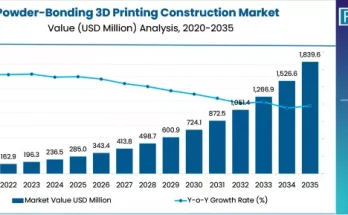The global abort gate market is expected to grow significantly by 2035. Demand is driven by new airport terminal expansions, retrofit of existing boarding/airside infrastructure, and rising standards for passenger flow management in large, busy airports. Abort gates specialized gates or doors enabling safe and rapid diversion or closure during emergencies or for restricted access paths are becoming more important in modern airport design.
Airport operators and contractors are increasingly incorporating abort gates into boarding bridge systems, access control pathways, and security checkpoints to enhance operational flexibility, safety, and passenger routing. Modern designs are focusing on automation, fast actuation, redundant safety features, and integration with terminal control systems.
Key Market Insights at a Glance
-
Base market value (2025): Estimated as a multi-million USD industry with growing procurement for infrastructure upgrades
-
Forecast value (2035): Substantial increase driven by terminal expansion, retrofit, and replacement contracts
-
CAGR (2025-2035): Moderate to robust growth (depending on region and infrastructure investment)
-
Leading application segments: Boarding bridges, security checkpoints, restricted access corridors
-
Preferred design features: Automated actuation, high durability, quick closure / diversion capability
-
Key growth regions: Asia Pacific, Middle East & Africa, North America
To Access the Complete Data Tables & in-depth Insights, Request a Discount on this report: https://www.factmr.com/connectus/sample?flag=S&rep_id=5516
Five Forces Driving Market Growth
-
Airport expansion & modernization: New terminal construction and expansion of existing airports require installation of safety and access control infrastructure, including abort gates.
-
Safety & regulatory mandates: Aviation safety standards and passenger flow regulations push airports to adopt abort gates to handle emergencies or rerouting in boarding / disembarkation pathways.
-
Operational efficiency & flexibility: Abort gates allow rapid closure or redirection of passenger traffic during emergencies, maintenance, or peak flows.
-
Technological innovation: Manufacturers are developing automated gates with sensors, remote controls, redundant mechanisms, and fast-closing capabilities integrated with terminal control systems.
-
Replacement & retrofit demand: Older gates or manual systems are being upgraded with automated or fail-safe abort gate systems to meet current standards and handle higher passenger volumes.
Regional Outlook
-
Asia Pacific: High growth due to rapid airport construction, rising passenger numbers, and focus on modern terminal design in countries like China, India, Southeast Asia.
-
Middle East & Africa: Significant projects in hub airports are driving demand for advanced abort gate systems to manage large volumes of passengers and high security standards.
-
North America: Demand driven by retrofit projects, expanding international gateways, and regulatory upgrades of existing boarding and security systems.
-
Europe: Demand from modernization of aging airports and implementation of stricter safety and passenger management standards.
-
Latin America: Emerging growth as airports upgrade infrastructure and adopt more automated access / boarding systems.
Recent Developments
-
Airports in several regions have begun installing automated abort gate systems capable of rapid closure and rerouting during emergencies or maintenance operations.
-
Manufacturers have launched new abort gate models featuring faster actuation, high durability, and integration with boarding bridge controls.
-
Contractors have signed contracts for retrofitting older boarding and access corridors with automated abort gates that meet newer safety and passenger flow standards.
-
Some gate equipment suppliers have formed partnerships with airport terminal automation companies to provide integrated systems combining abort gates, boarding bridges, and passenger routing controls.
Competitive Landscape
Key players in the abort gate market include specialized airport infrastructure equipment manufacturers and access control solution providers. These companies are focusing on product innovation (fast actuation, safety redundancies, remote control integration), regional manufacturing / service support, and tie-ups with airport terminal contractors to win projects on new and retrofit terminals.
Market Outlook & Strategic Insights
Over the forecast period, the abort gate market is expected to grow steadily as airports expand capacity, upgrade existing boarding and access infrastructure, and enforce new safety / passenger flow standards.
Suppliers offering automated, high-speed abort gates with integrated control and robust safety features will be well positioned.
Emerging airport hubs in Asia Pacific and Middle East & Africa represent the most compelling opportunities due to large infrastructure projects and rising passenger throughput.
Purchase Full Report for Detailed Insights
For access to full forecasts, regional breakouts, company share analysis, and emerging trend assessments, you can purchase the complete report: https://www.factmr.com/checkout/5516
Have specific requirements or need assistance on report pricing or have a limited budget? Please contact sales@factmr.com
Contact:
US Sales Office
11140 Rockville Pike
Suite 400
Rockville, MD 20852
United States
Tel: +1 (628) 251-1583, +353-1-4434-232
Email: sales@factmr.com
About Fact.MR:
Fact.MR is a global market research and consulting firm, trusted by Fortune 500 companies and emerging businesses for reliable insights and strategic intelligence. With a presence across the U.S., UK, India, and Dubai, we deliver data-driven research and tailored consulting solutions across 30+ industries and 1,000+ markets. Backed by deep expertise and advanced analytics, Fact.MR helps organizations uncover opportunities, reduce risks, and make informed decisions for sustainable growth.



